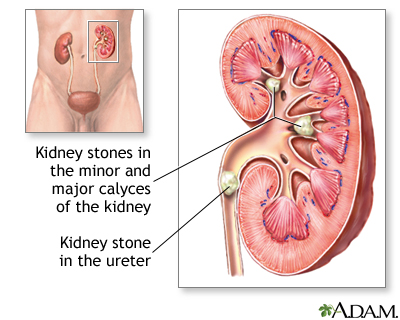
Kidney stones, an ailment commonly associated with middle age have been found to be increasing in children, according to the New York Times.
“The older doctors would say in the ’70s and ’80s, they’d see a kid with a stone once every few months,” said Dr. Caleb P. Nelson, a urology instructor at Harvard Medical School who is co-director of the new kidney stone center at Children’s Hospital Boston. “Now we see kids once a week or less.”
In China, kidney stones have been reported in children who consumed milk products contaminated with melanine, a toxic chemical. But in the United States, the increase in kidney stones in children has been associated with over consumption of salt.
Excess amounts of salt and lack of fluids are often the reason behind adult kidney stones, so it stands to reason that they would also affect children.
“What we’ve really seen is an increase in the salt load in children’s diet,” said Dr. Bruce L. Slaughenhoupt, co-director of pediatric urology and of the pediatric kidney stone clinic at the University of Wisconsin.
Although some experts have blamed an increase in childhood obesity for the poor eating habits that contribute to the increase of childhood kidney stones, Dr. Caleb P. Nelson, a urology instructor at Harvard Medical School who is co-director of the new kidney stone center at Children’s Hospital Boston says, Of the school-age and adolescent kids we’ve seen, most of them appear to be reasonably fit, active kids. We’re not seeing a parade of overweight Nintendo players.”
Other doctors and clinics however, have been seeing more overweight children with kidney stones, leading them to suspect that a poor diet is, in fact, a large factor in the onslaught of kidney stones.
And, fifty to 60 percent of children with kidney stones have a family history of the disease. “If you have a family history, it’s important to recognize your kids are at risk at some point in their life,” Dr. Nelson said. “That means instilling lifelong habits of good hydration, balanced diet, and avoiding processed high-salt, high-fat foods.”
Children with kidney stones experience pain in their side or stomach, while younger children may have a harder time expressing what they’re feeling, making the condition harder to diagnose.
Read More Articles at WeEarth.com
Want to shop with the Earth in mind? Check out our Earth-minded Marketplace!





No comments:
Post a Comment